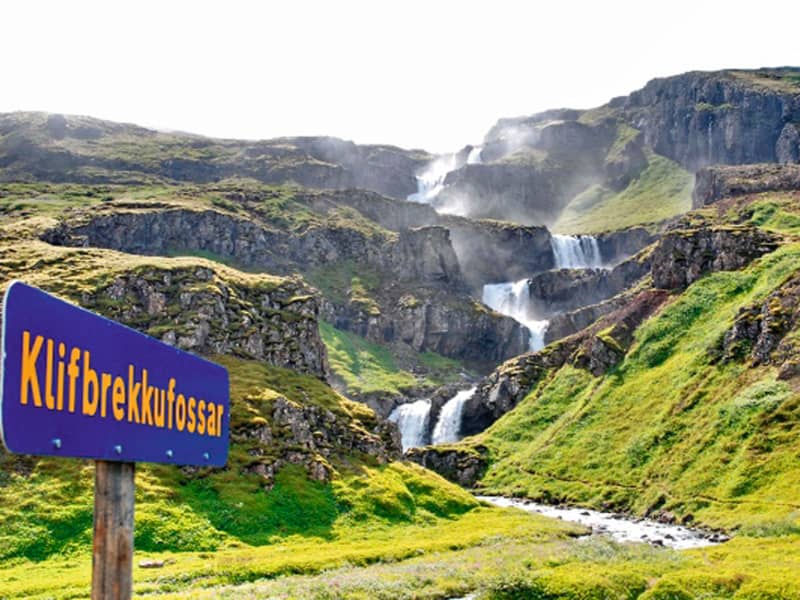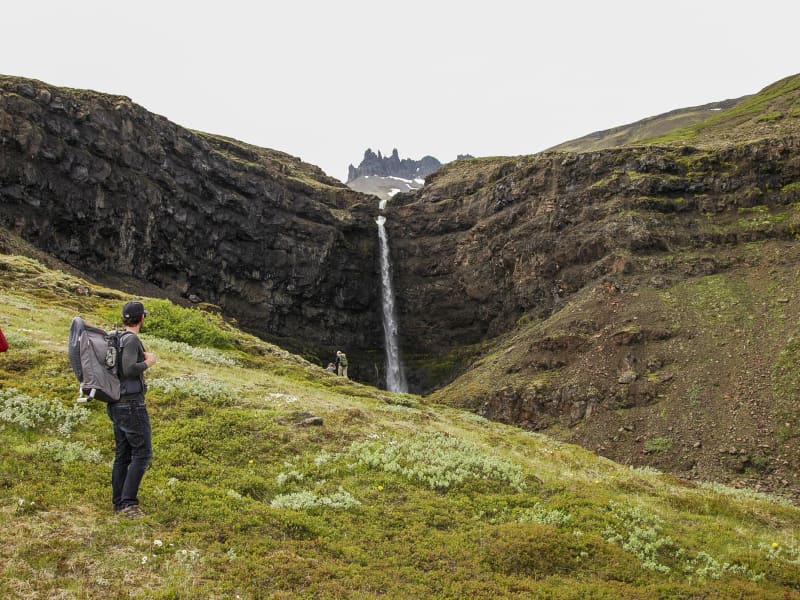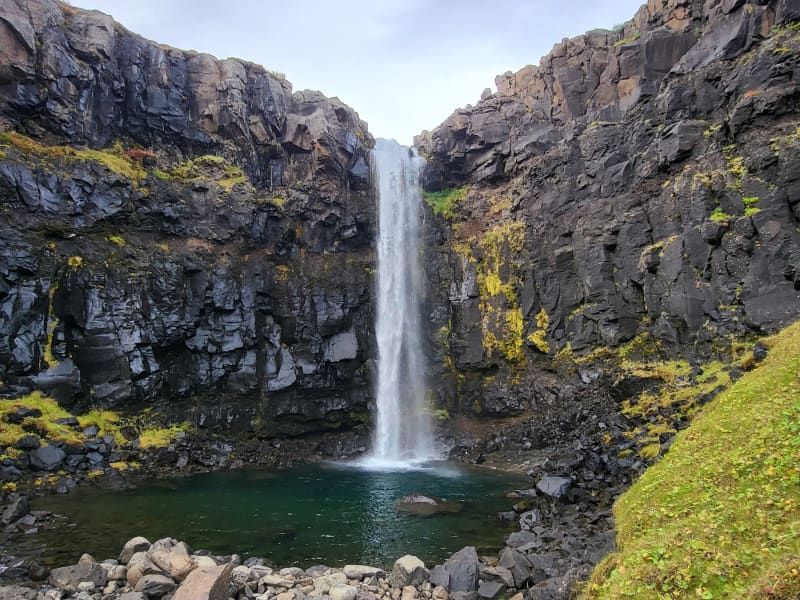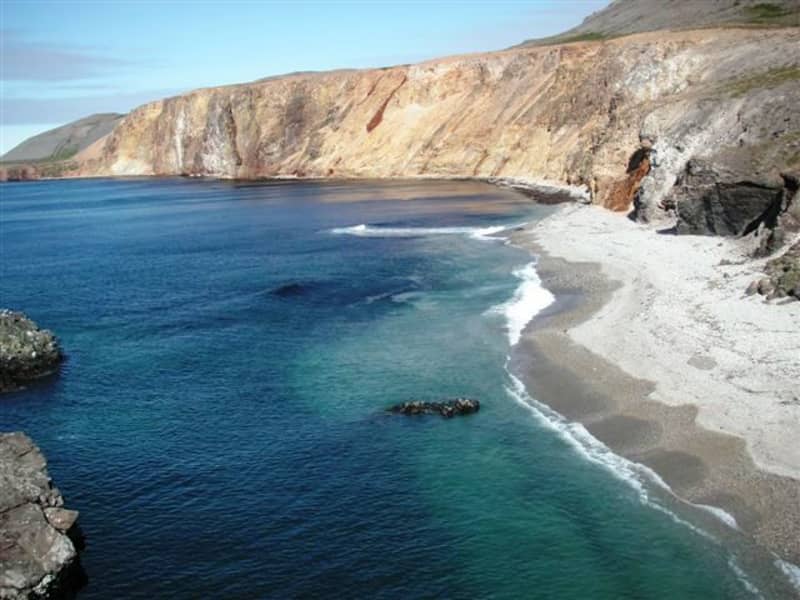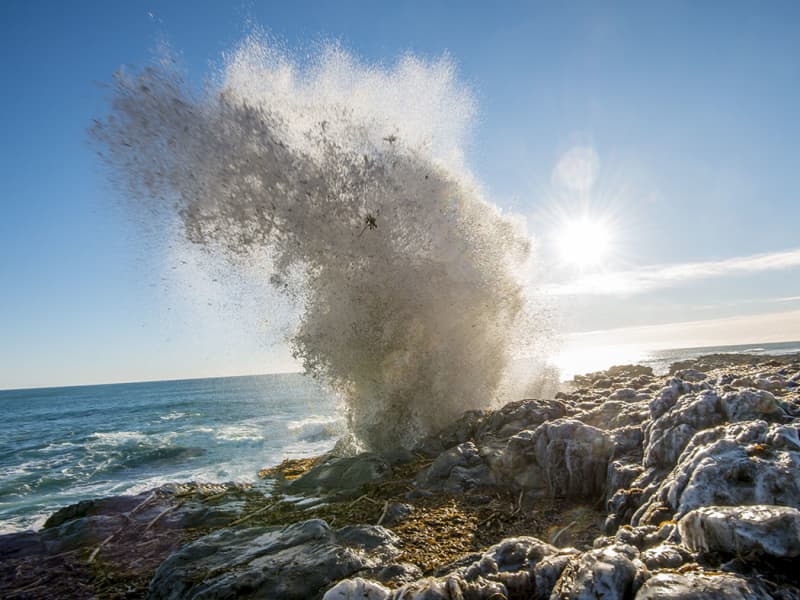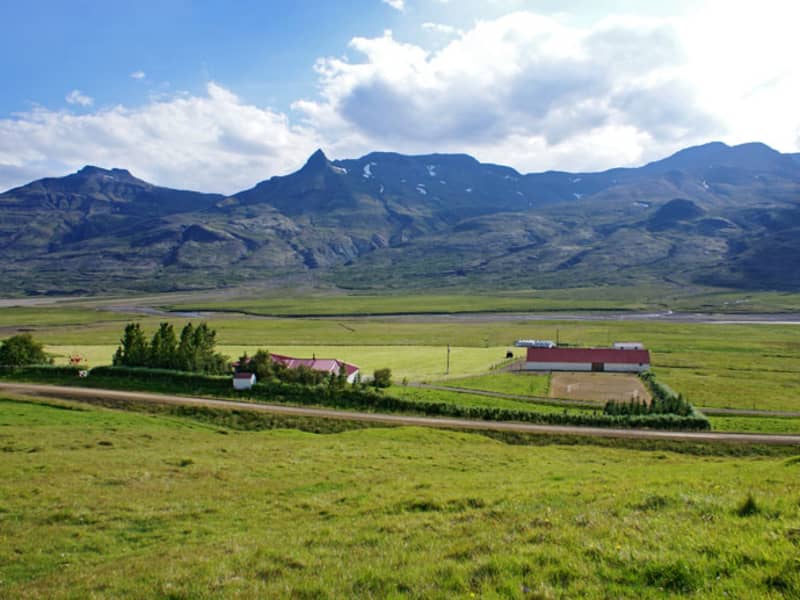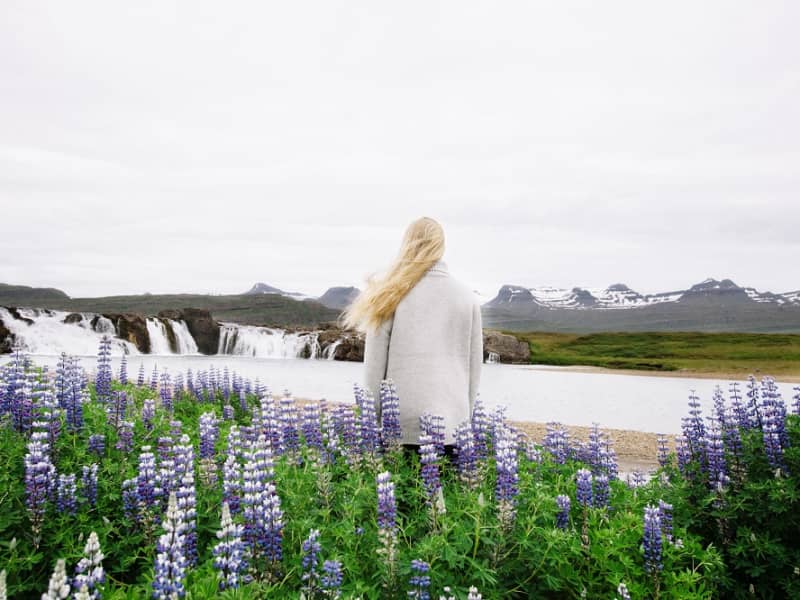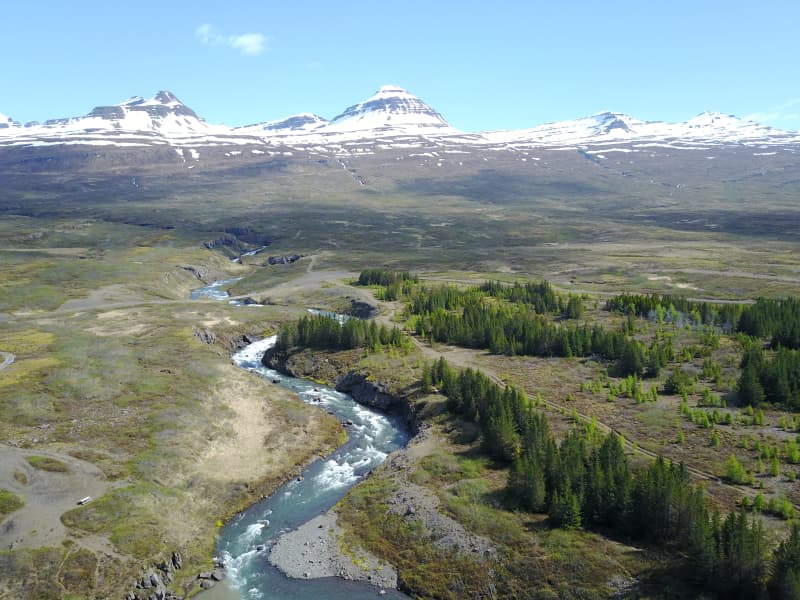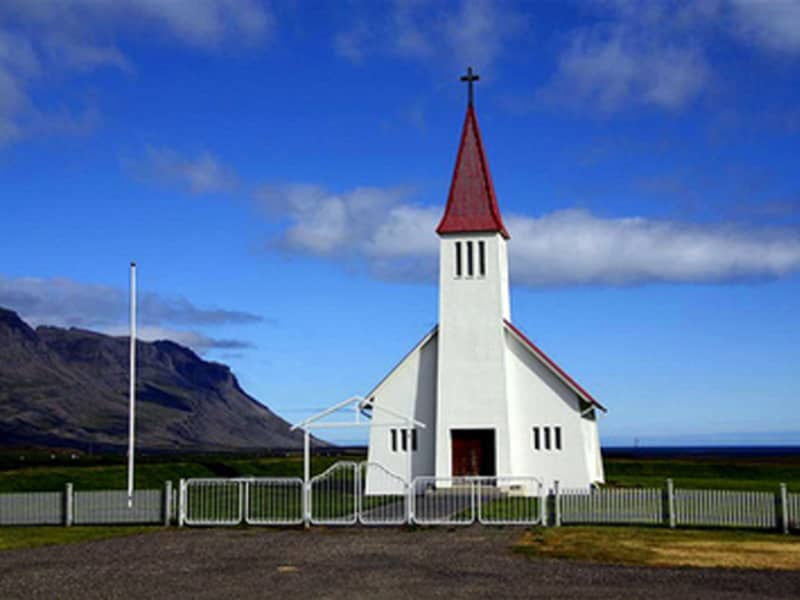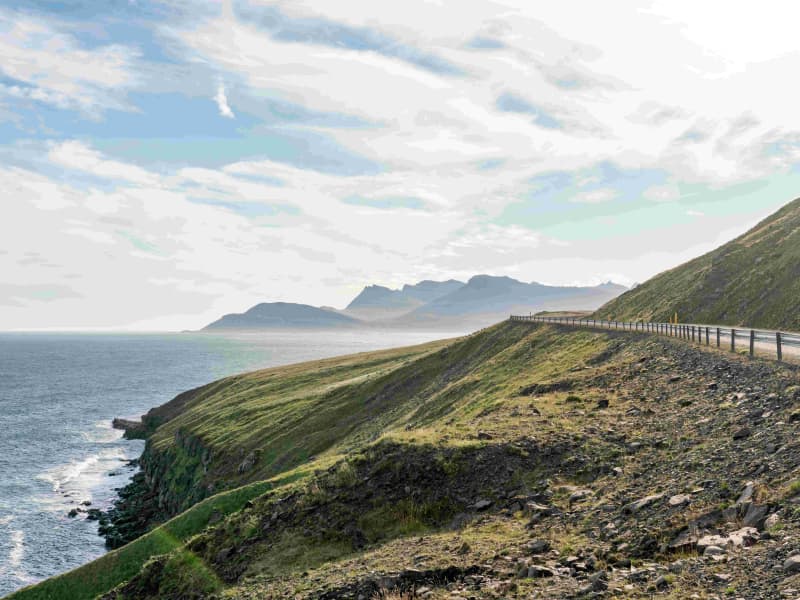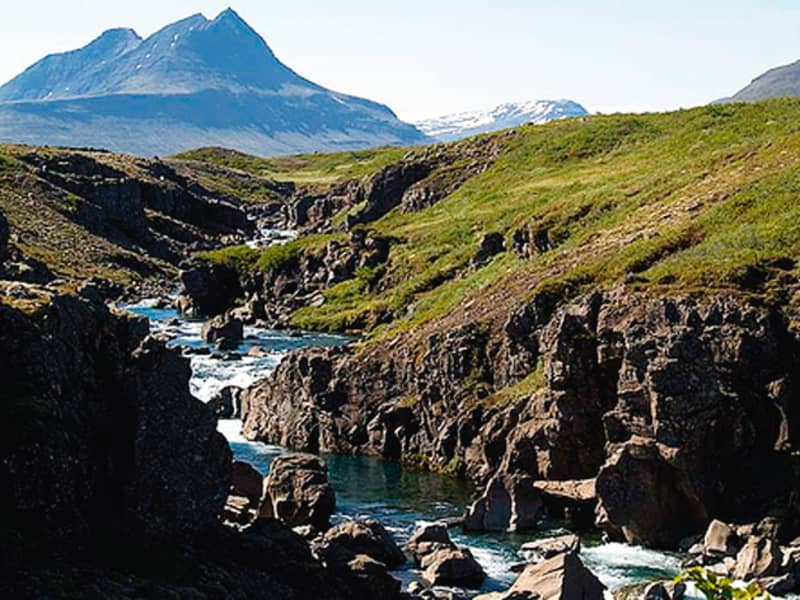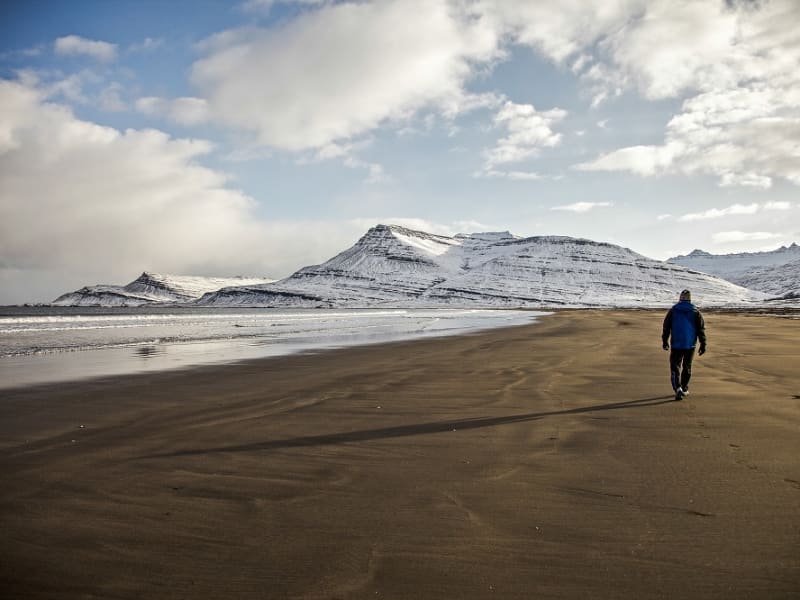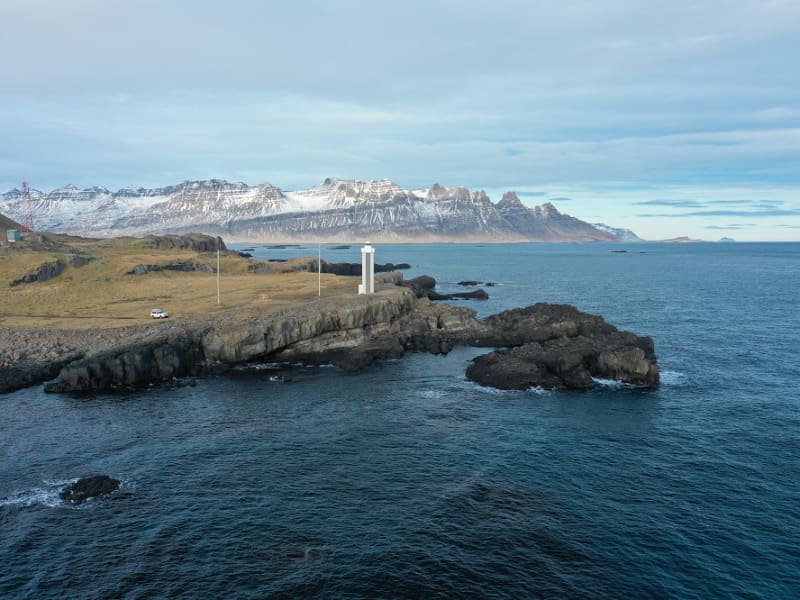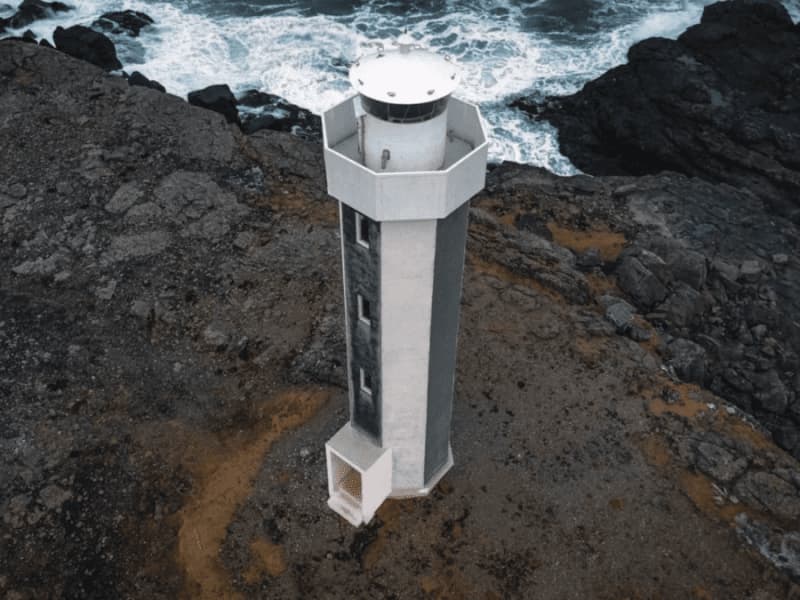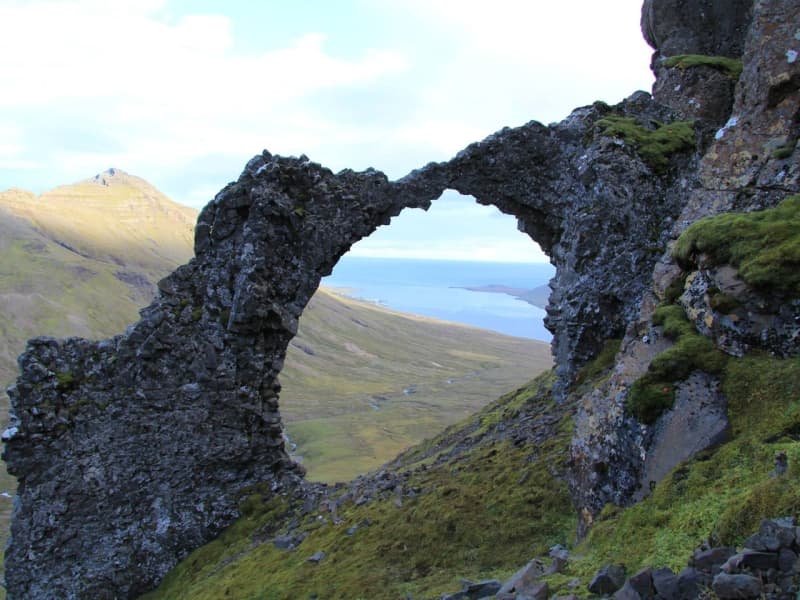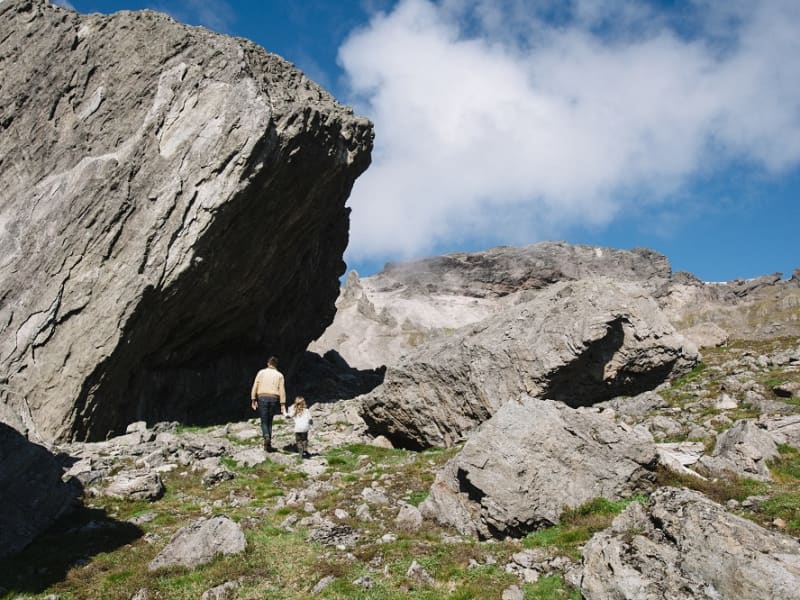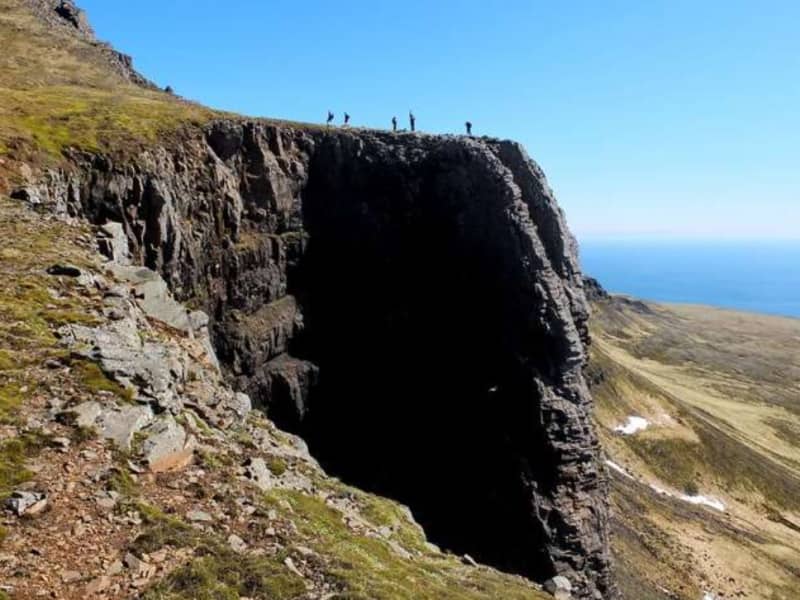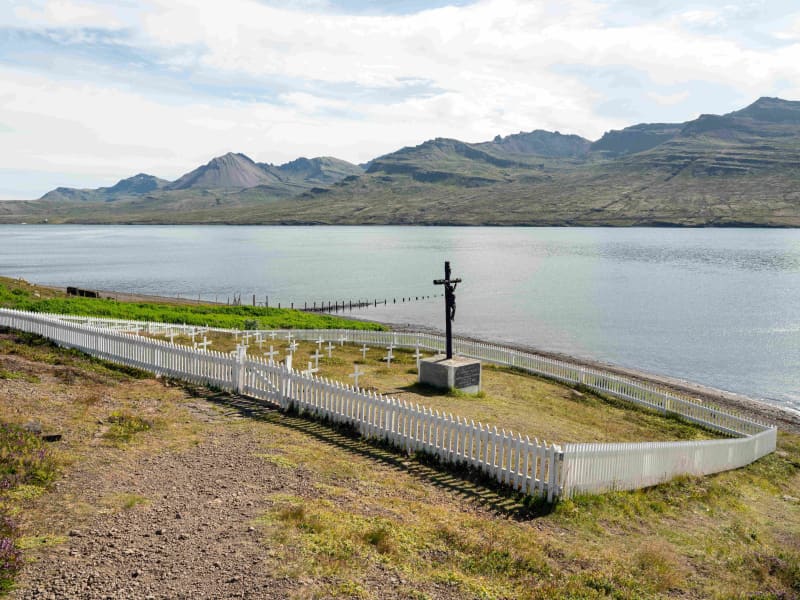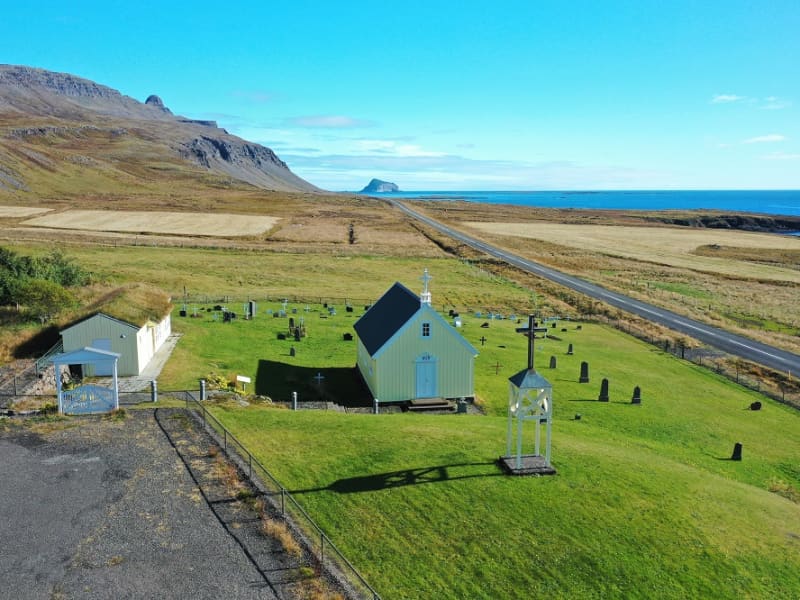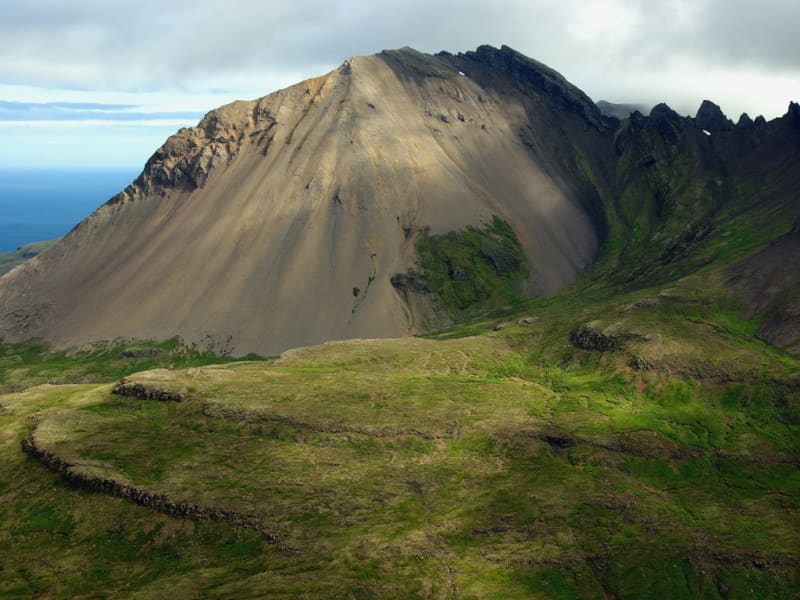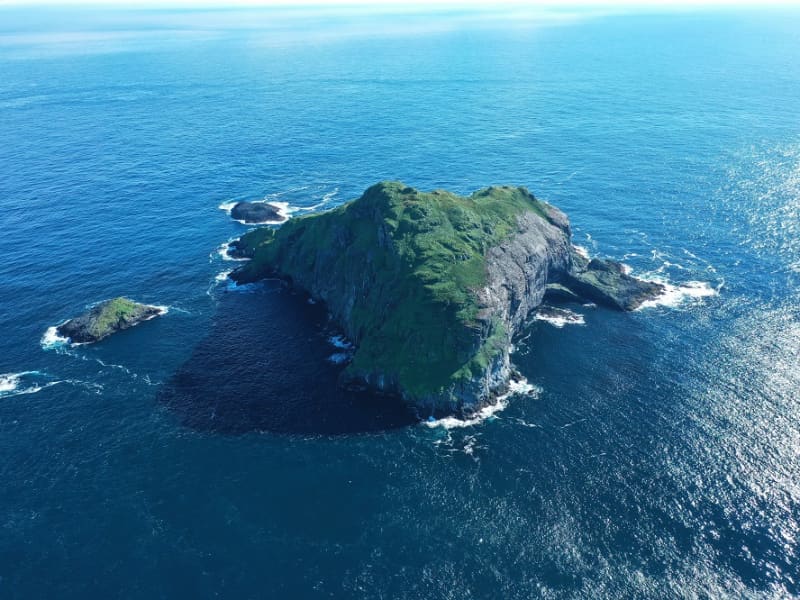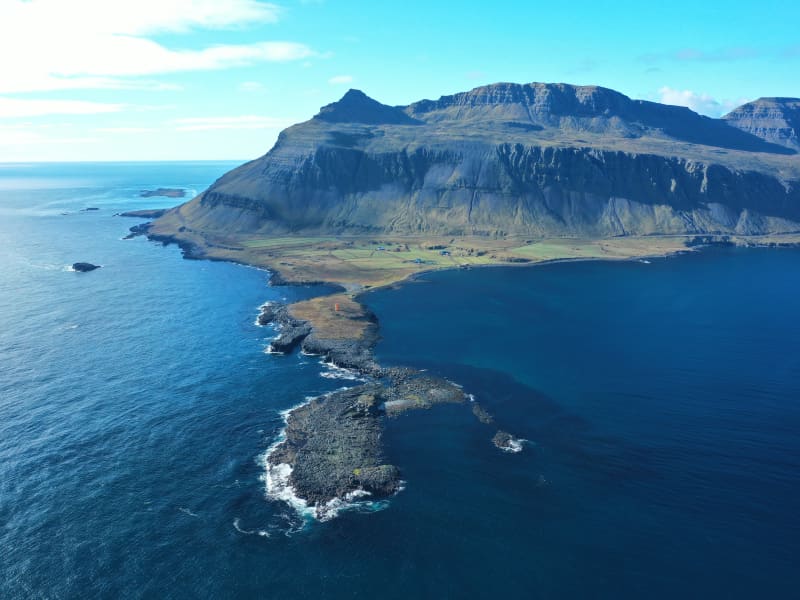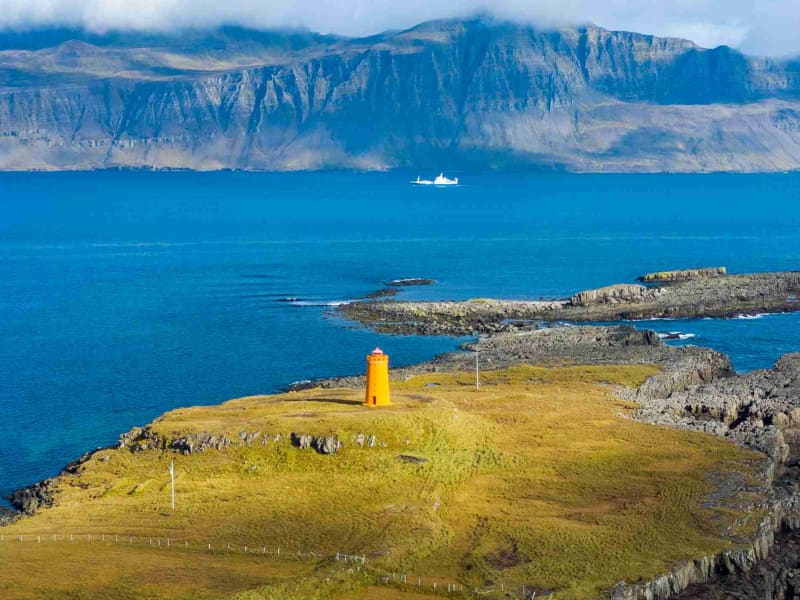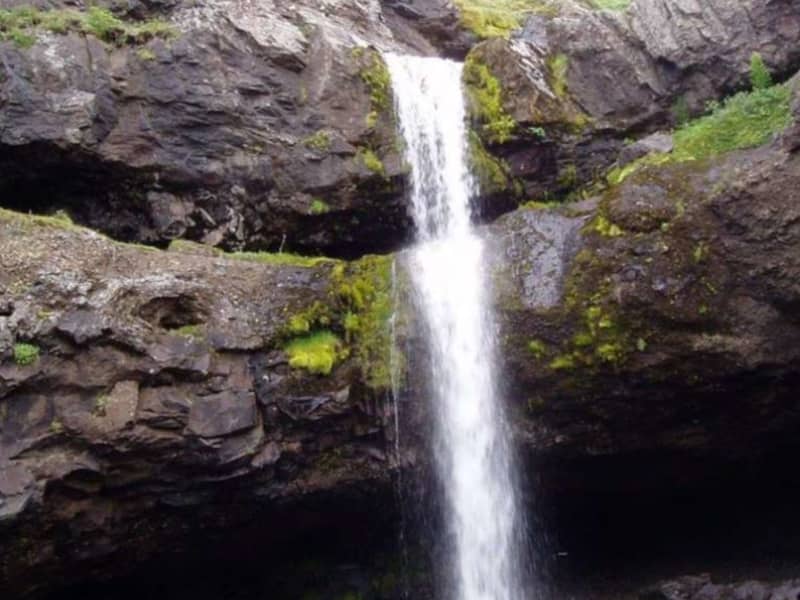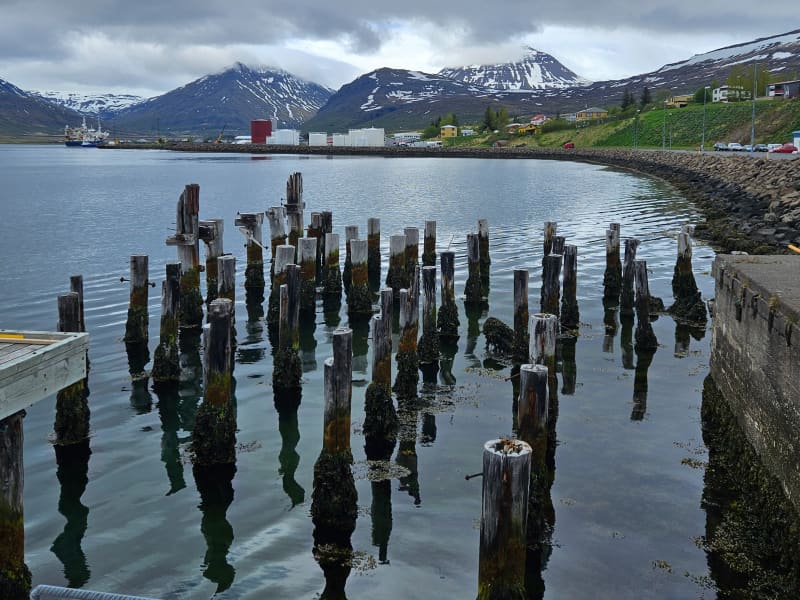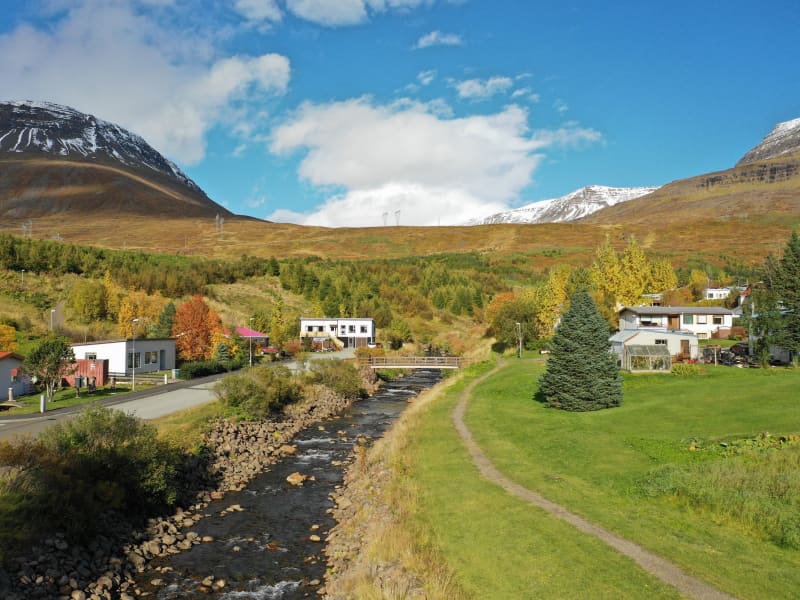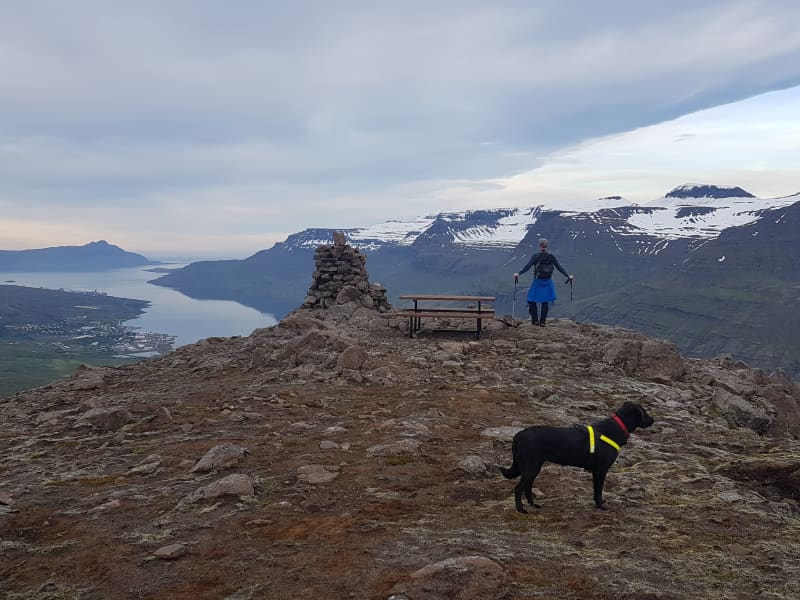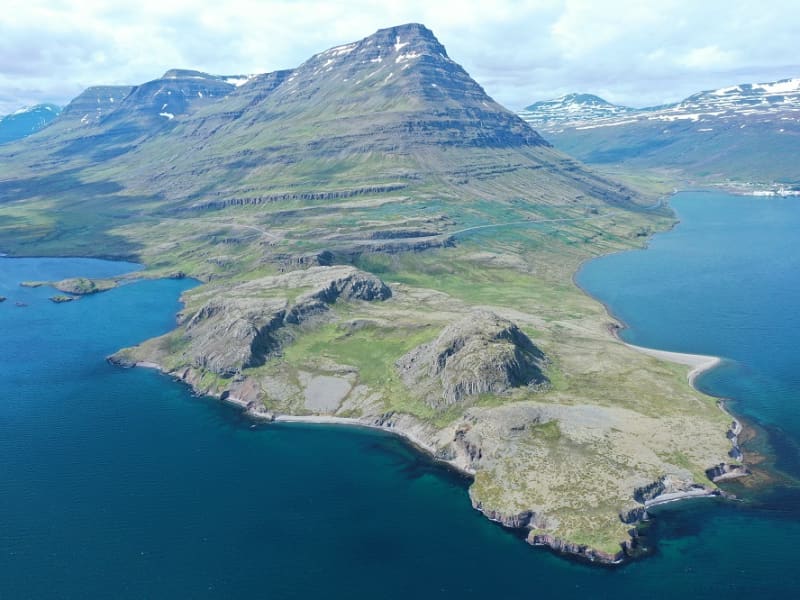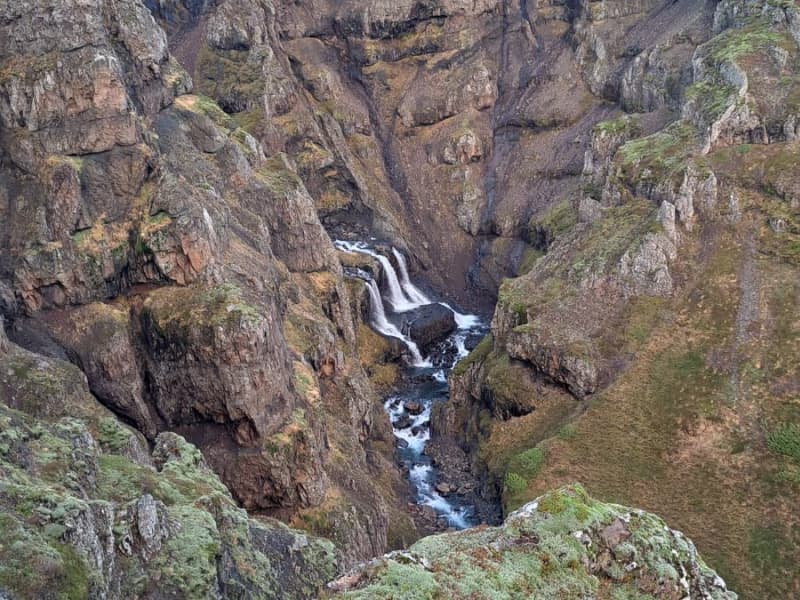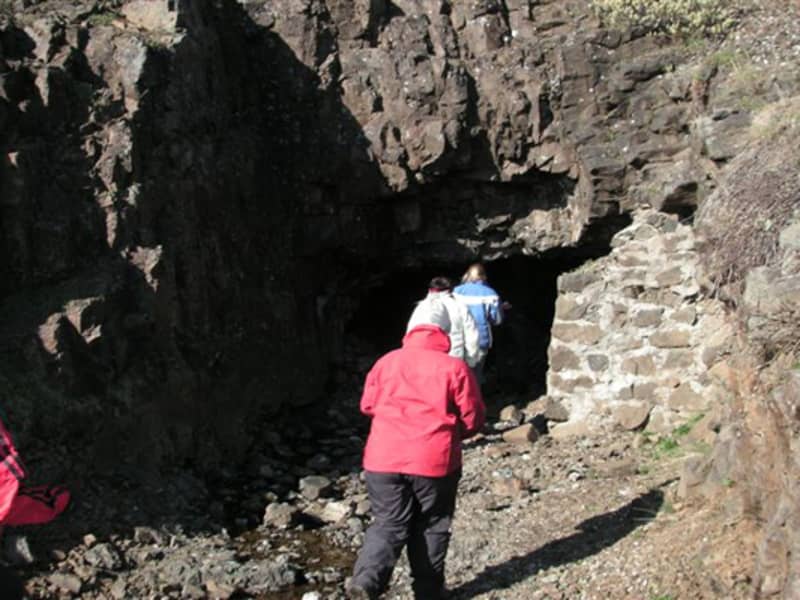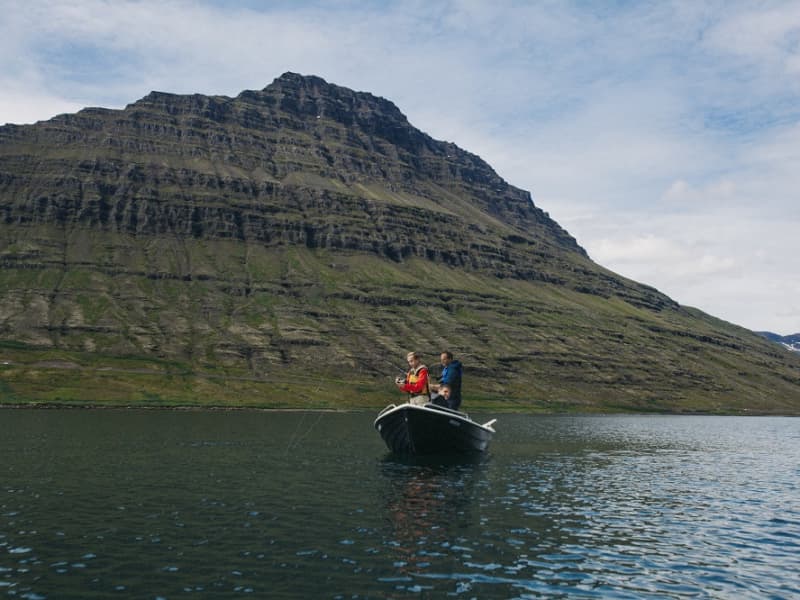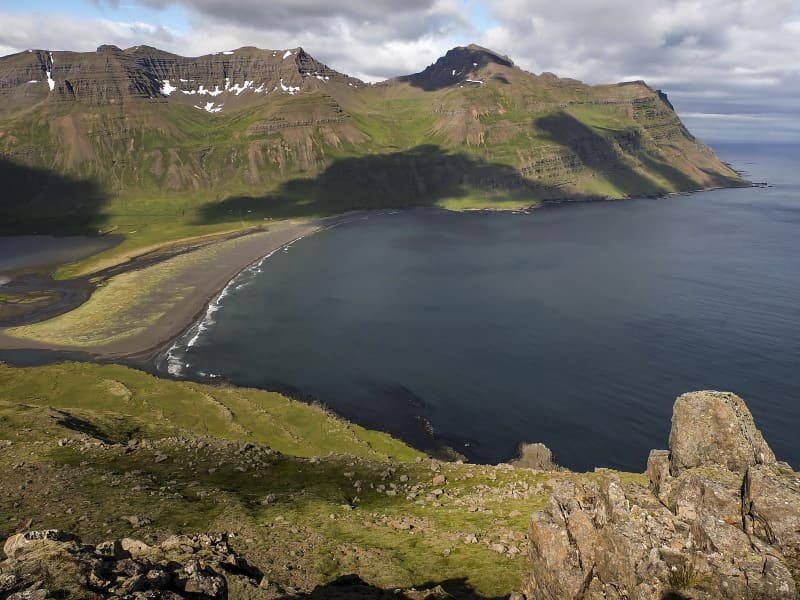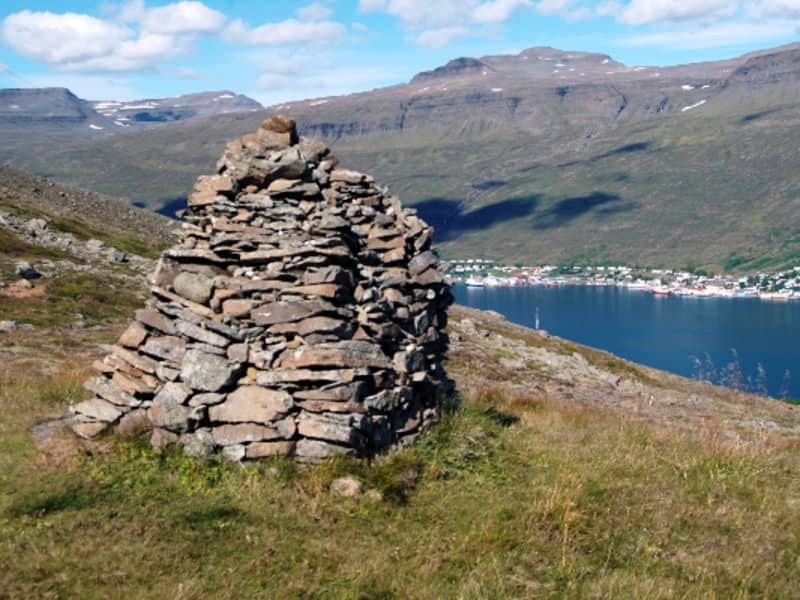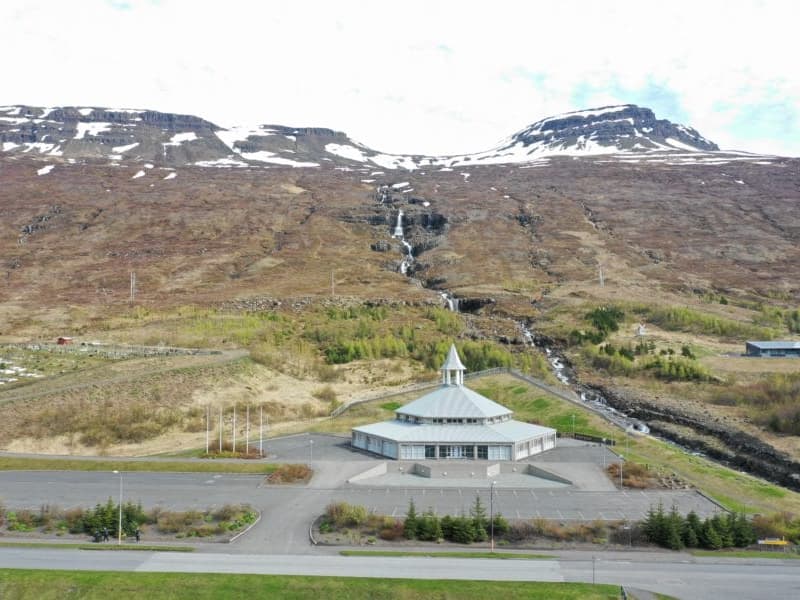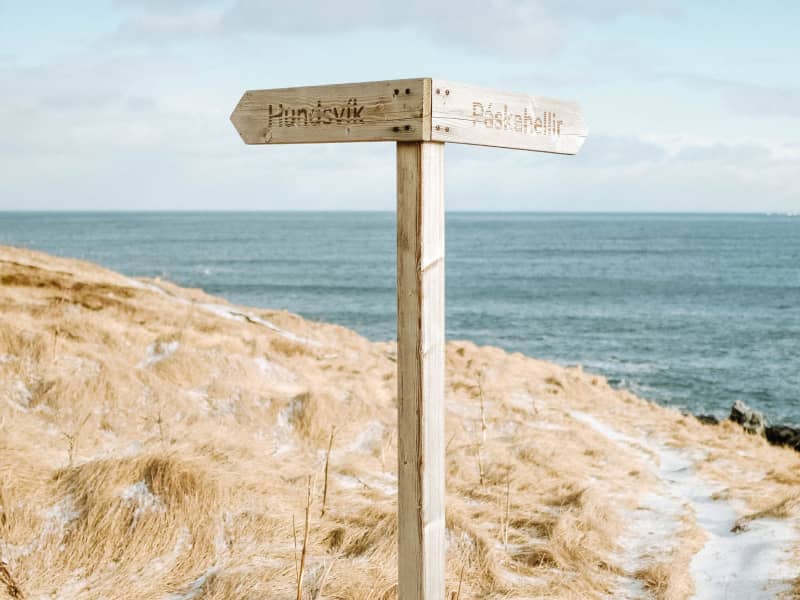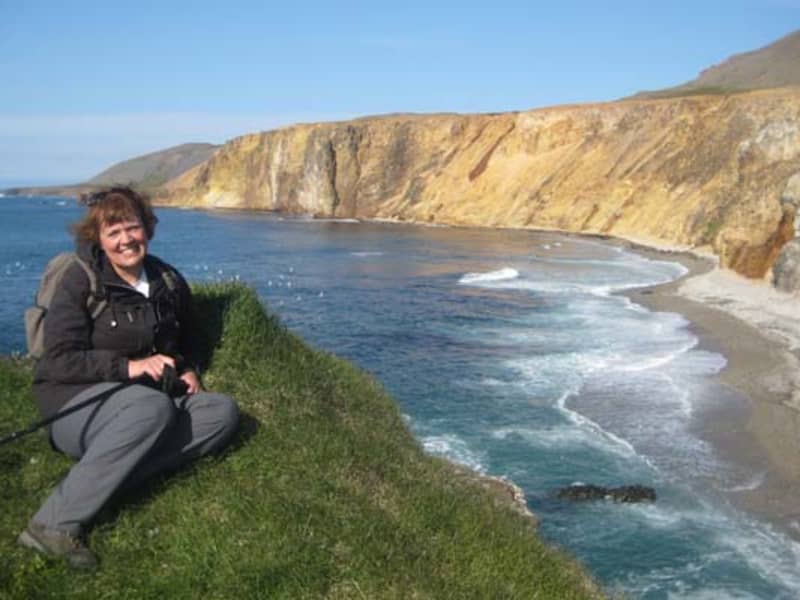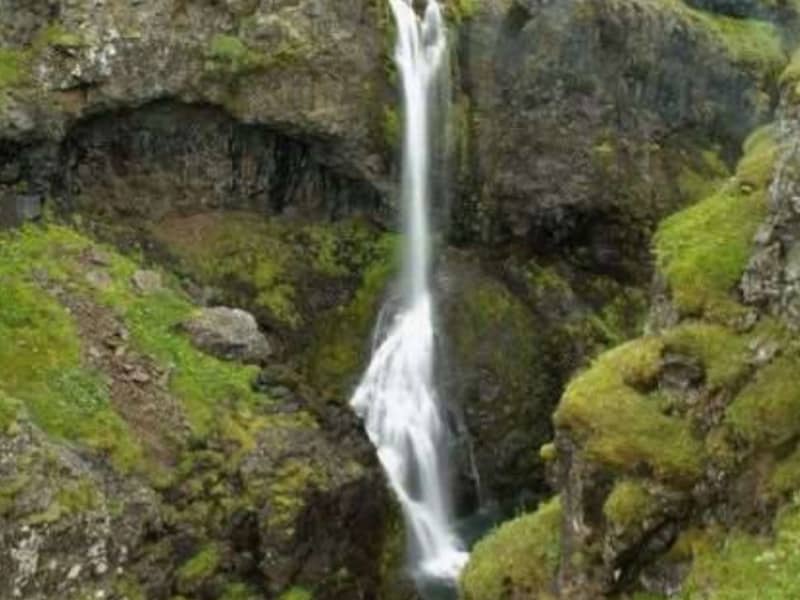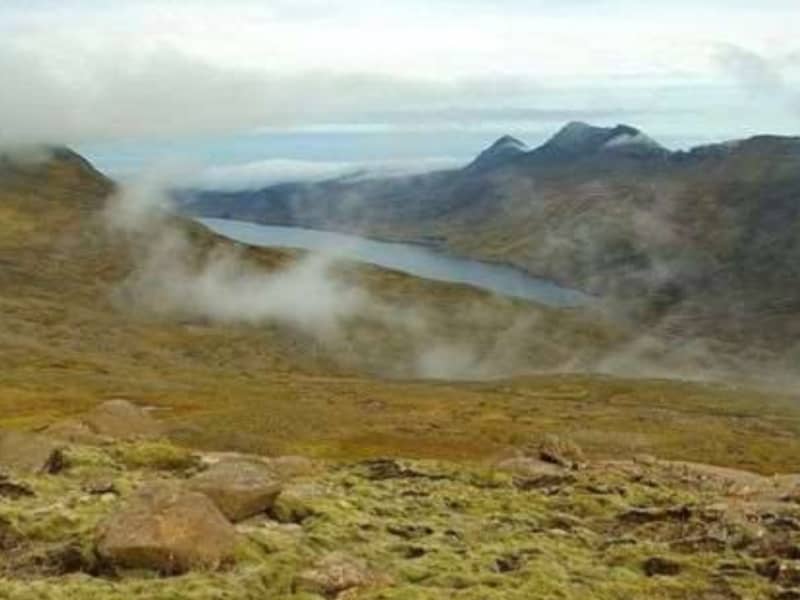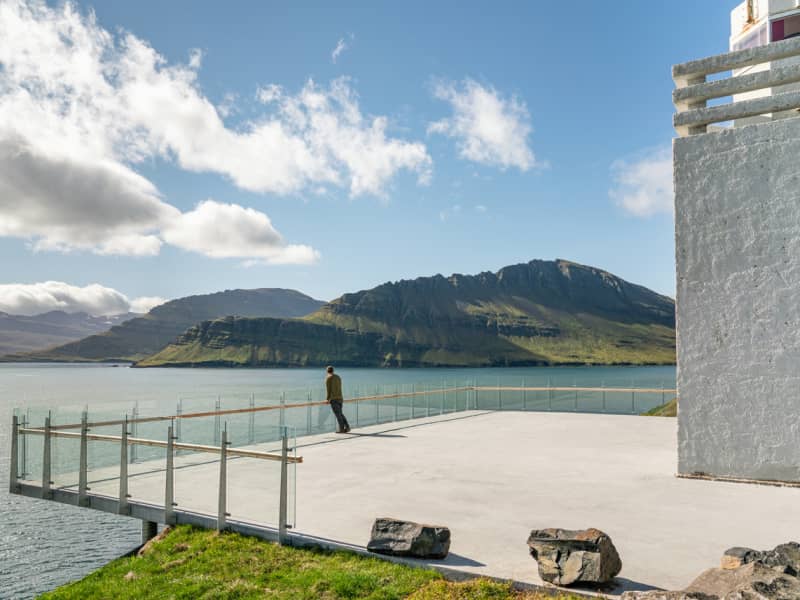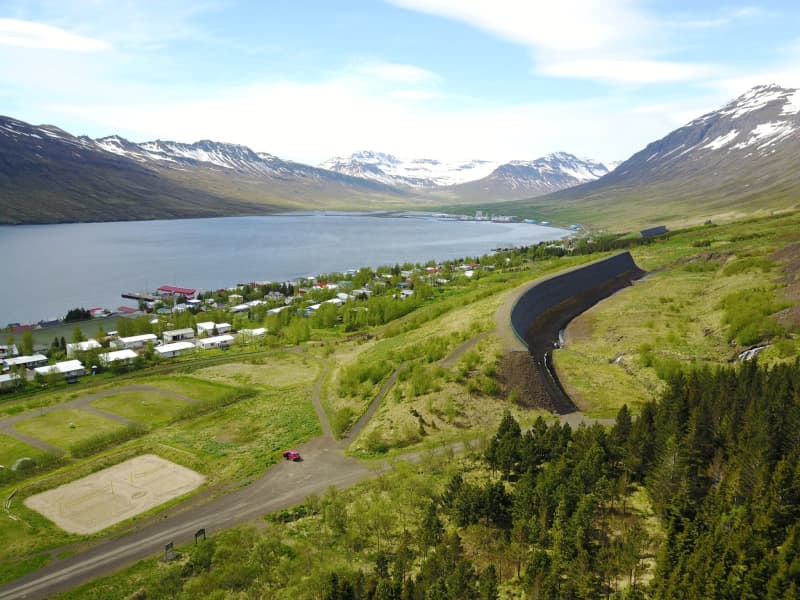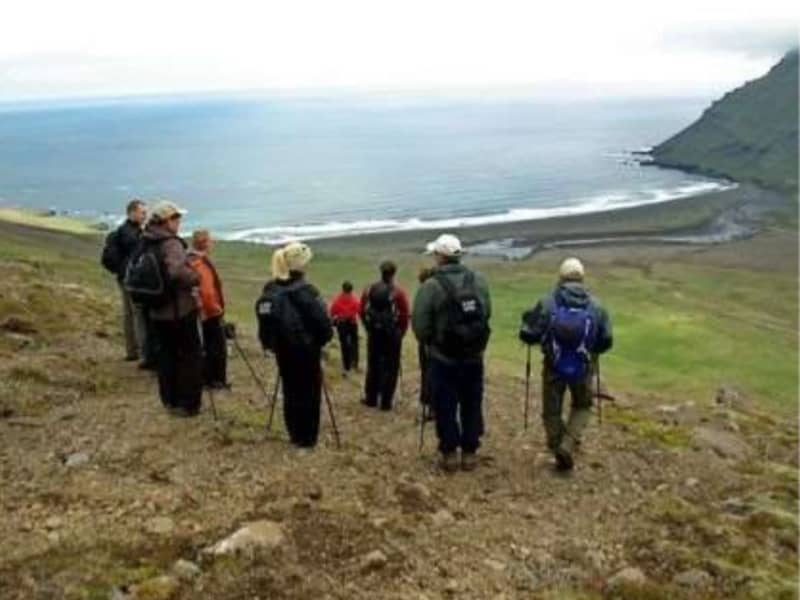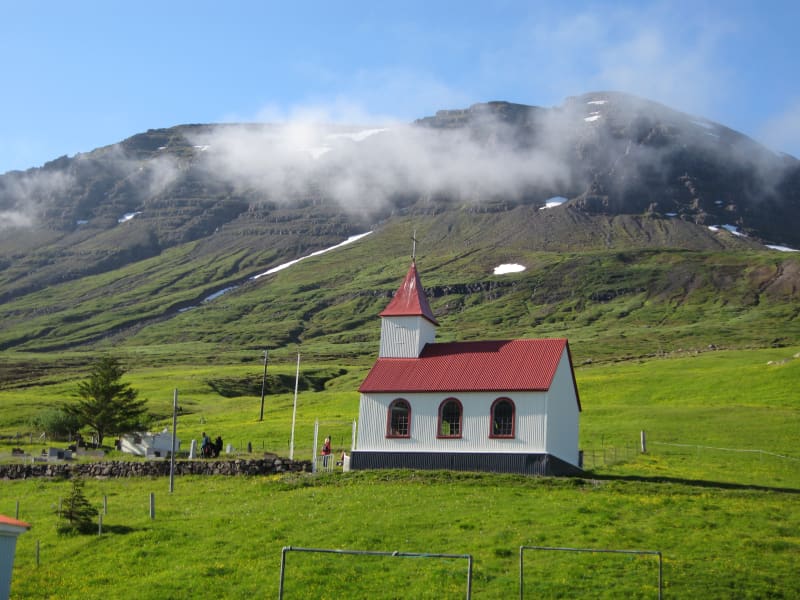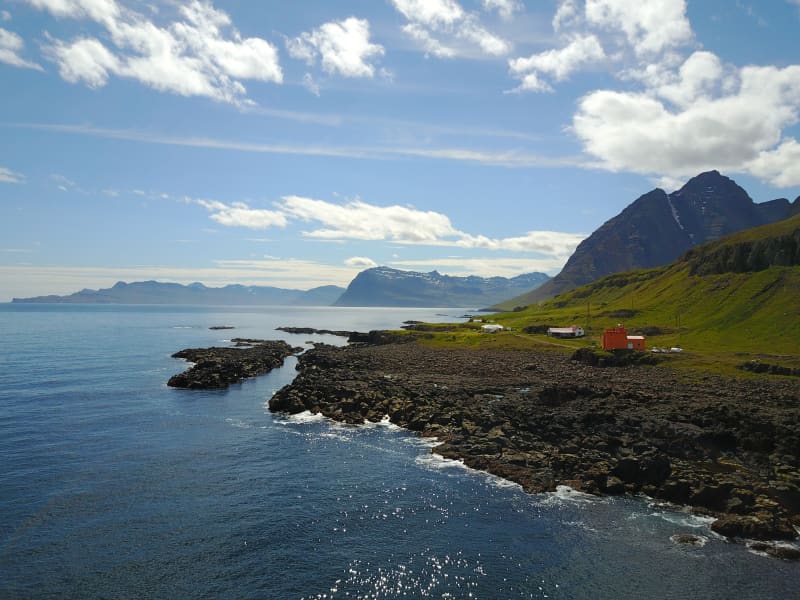Páskahellir Cave
In the Neskaupstaður Nature Reserve, there are enjoyable hiking trails, including one to Easter Cave. A marked trail starts from the parking area at the edge of Neskaupstaður, following the coastline above the sea cliffs to a staircase that descends into the rocky shore by the cave. You can either continue and climb up outside the cave or return the same way. Easter Cave is a grotto carved by the waves, and at its end, you can see cylindrical holes left by trees that likely stood in a lush forest that was buried under lava about 12 million years ago. These holes are now often used as nesting sites by rock pigeons. Near the cave, you can also see beautifully shaped pillow lava, impressive rock dikes, and in some places, hollows filled with quartz crystals and other minerals. Deposits create beautiful patterns in the dark cliff walls, and water drips from the rocks. In winter, this often results in beautiful ice formations and large icicles on the cliff walls. There is a beautiful view over Norðfjörður Bay to Barðsneshorn and Rauðubjarg with its eternal sunshine. The sea, with its small creatures, stands in pools, and in summer, the cliffs are adorned with swathes of blue lilies. There is abundant birdlife along the shore, such as fulmars, gulls, eider ducks, auks, and various ducks. It is very common to see harlequin ducks in summer, and the winter wren often stays near the cliffs by the staircase, frequently singing for hikers.
It is said that on Easter morning, one can see the sun dance in the cave, and for many years, the Fjord People’s Travel Association has organized hikes to the cave on Easter morning to try to witness this phenomenon. The story also tells that on Easter morning long ago, the farmer from Bakki managed to capture the slough of a beautiful seal maiden who, along with others from Pharaoh's company, had come ashore to celebrate. The farmer married her, and they had seven children. She eventually regained her slough and returned to the sea to her other seven children. Later, the same farmer improved his cattle by capturing a sea cow, breaking its bladder at Uxavogur, a location on the shore near Easter Cave. It was believed that the seal maiden had sent her former husband this blessing. The legend says that sea cattle can be identified by their sea-grey colour and the bladder between their horns or on their noses. They become tame immediately if the bladder is burst, losing their sea nature. In the barn, sea cattle can be recognized by always turning their heads toward the sea.
